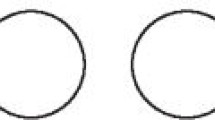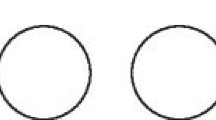Abstract
Data sources
PubMed/MEDLINE, Science Direct, Web of Science, Scopus and the Cochrane Library were searched until October 2017.
Study selection
Clinical trials, controlled trials, retrospective studies and case series containing at least ten cases with a minimum follow-up of ten years of patients treated with marsupialisation or decompression with or without enucleation, and enucleation alone evaluating the recurrence rates.
Data extraction and synthesis
Two reviewers independently assessed for eligibility and extracted data. The level of agreement between reviewers was calculated. The quality of the included studies was assessed using the Methodological Index of Nonrandomised Studies (MINORS) scoring system and the Newcastle Ottawa Quality Assessment Scale (NOS).
Data were combined in meta-analysis using a fixed effect model of the calculated odds ratio with 95% CI for each comparison.
Results
Twenty-nine studies were included in the review. Of those 25 were characterised as retrospective studies, one cohort and three case series. Of the 1321 cases 99 were marsupialisation; 45 received marsupialisation followed by enucleation; 27 were treated by decompression; 101 received decompression followed by enucleation and 1049 cases were treated by enucleation alone.
The recurrence rate for decompression followed by enucleation was 11.9% (95% CI 5.6 to 18.2%), marsupialisation followed by enucleation 17% (95% CI 6.6 to 28.9%), enucleation 20.8% (95% CI 18.3 to 23.2% ), decompression alone 18.5% (95% CI 8.2 to 28.9%) and marsupialisation 18.2% (95% CI 10.6 to 25.8%).
Conclusions
The authors concluded that there is a significant superiority for OKC treatment when decompression is used before enucleation OR 0.48 (95% CI 0.22 to 1.08).
Similar content being viewed by others
Commentary
Odontogenic keratocyst was first named as such in 1956 by Philipsen.1 The WHO reclassified it as a tumor in 2005,2 while in 2017 it was moved back to the cyst category.3
Aggressive growth, recurrence after treatment, the identification of specific gene mutations and other new knowledge of its molecular pathogenesis make the case for the ‘tumor’ characteristics, while the well documented regression after decompression or marsupialisation accompanied by histological changes, keep on supporting the ‘cyst’ behaviour.
This review intended to summarise the outcome of conservative therapies of non-syndromic OKCs based on the rate of recurrence.
The authors started with a clear question and explicitly stated inclusion and exclusion criteria, search strategy, study design and minimum follow-up.
Five databases were searched for clinical trials, retrospective studies and case series with more than ten patients with a follow-up of at least 12 months published in English. No hand search was performed.
Two authors independently checked for eligibility, quality assessment and data extraction. Level of agreement between reviewers was calculated and reported to be high for each step.
Of the 29 included studies, 25 were classified as retrospective, one cohort and three case series, although the distinction between retrospective and case series is unclear. The quality was assessed as being good from all the included studies.
The range for follow-up varied greatly between studies (from 12 up to 300 months), but also within at least nine on the included studies.
Of the 1321 cases included in the review 7.5% underwent marsupialisation, 3.4% marsupialisation followed by enucleation, 2.0% decompression, 7.7% decompression followed by enucleation and 79.4% enucleation alone.
Four meta-nalyses were calculated based on 690 cases from 13 studies (12 retrospective and one case series).
From the decompression + enucleation versus enucleation alone: 9/57 (15.8%) treated by decompression followed by enucleation recurred, while 38/140 (27%) cases treated by enucleation alone recurred. The calculated odds ratio for this group was 0.48 (95% CI 0.22 to 1.08) in favour of decompression followed by enucleation and statistically significant (p= 0.0163).
From the marsupialisation + enucleation versus enucleation: 3/21 (14.2%) experienced recurrence in the first group, while 38/195 (19.5%) recurred in the enucleation alone. The calculated odds ratio was not statistically significant.
From the decompression alone versus enucleation alone: 4/24 (16.7%) of the cases treated with decompression alone experienced recurrence while 2/18 (11.2%) cases treated with enucleation alone experienced recurrence. The difference between groups was not statistically significant.
From the marsupialisation versus enucleation alone: 17/73 (23.3%) of the cases treated with marsupialisation alone recurred while 51/349 (14.7%) treated by enucleation alone recurred with no statistically significant difference between groups.
It is unclear how the difference in the number of cases for each group was addressed in each of the meta-analyses.
The authors' conclusions suggesting the superiority of decompression followed by enucleation is based on the outcome of five studies with 57 cases with a range of follow-up between 12 and 228 months.
Up to date there is no single approach to OKC that provides complete resolution with no or very low recurrence rates while having limited morbidity. The two-step approach may provide the best results, but it is still unclear for what patient or lesion characteristics and the optimum length of follow-up needed.
References
Philipsen HP . On keratocysts in the jaws. Tandlaege Bladet 1956; 60: 963–980.
Barnes L, Eveson JW, Reichart P, Sidransky D . WHO Classification of Tumours. Vol. 9, Lyon, France: IARC Press, 2005.
Wright JM, Vered M . Update from the 4th Edition of the World Health Organization Classification of Head and Neck Tumours: Odontogenic and Maxillofacial Bone Tumors. Head Neck Pathol 2017; 11: 68–77. doi:10.1007/s12105-017-0794-1. Epub 2017 Feb 28. PubMed PMID: 28247226; PubMedCentral PMCID: PMC5340735.
Author information
Authors and Affiliations
Additional information
Address for correspondence: Mayara Santos de Castro, Department of Pathology and Parasitology, Institute of Biomedical Sciences, Federal University of Alfenas, 700 Gabriel Monteiro da Silva Street, Alfenas, MG 37130001, Brazil. E-mail: maya.castro@outlook.com
de Castro MS, Caixeta CA, de Carli ML, Ribeiro Júnior NV, Miyazawa M, Pereira AAC, Sperandio FF, Hanemann JAC. Conservative surgical treatments for nonsyndromic odontogenic keratocysts: a systematic review and meta-analysis. Clin Oral Investig 2018; 22: 2089–2101. doi: 10.1007/s00784-017-2315-8. [Epub ahead of print] PubMed PMID: 29264656.
Rights and permissions
About this article
Cite this article
Spivakovsky, S. Surgical treatments for nonsyndromic odontogenic keratocysts. Evid Based Dent 19, 55–56 (2018). https://doi.org/10.1038/sj.ebd.6401309
Published:
Issue Date:
DOI: https://doi.org/10.1038/sj.ebd.6401309



